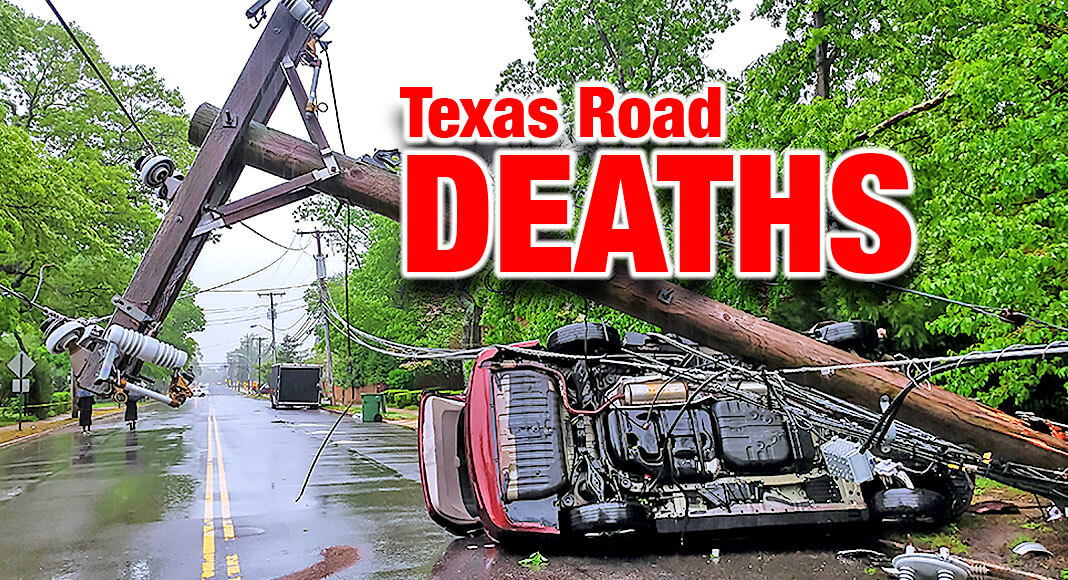
Texas Border Business
AUSTIN, Texas – When friends and coworkers heard there was a crash nearby, they tried to call tow truck driver Isaac Simmons for an update. They never heard back.
“You don’t realize how much somebody impacts your life until they’re gone,” Simmons’ friend Nathan Bryant said. “He was ripped away from us violently and it’s not right.”
Isaac Simmons was killed on the side of the road in May, 2021 while responding to a stalled vehicle. He was one of more than 4,480 people killed on Texas roads in 2021, making it the second deadliest year since TxDOT began tracking fatalities in 1940. Sadly, 1981 was the deadliest year with 4,701 fatalities.
The increase in fatalities in Texas last year reflects a deadly trend nationwide. An estimated 20,160 people died in motor vehicle crashes in the first half of 2021, up 18.4% over 2020. In Texas, traffic fatalities were up 15 percent from 2020-2021.
Recognizing roadway safety is a shared responsibility between all of us – the public, engineers and law enforcement – Transportation Commissioner Laura Ryan is pleading with Texans to do their part.
“Driver behavior is one of the causes, but also one of the most important solutions,” Ryan said. “This is not blame. These are facts. We all have a role. TxDOT can do more, and we accept that responsibility. The driving public can do more. For instance, in 2021, a total of 1,522 people were killed because of speed, and a total of 1,219 people were killed because they were not wearing a seat belt. These were decisions made by people that could have potentially saved 2,741 lives.”
At this year’s annual Texas Transportation Forum, University of Texas psychology professor Dr. Art Markman told TxDOT leaders and transportation stakeholders that pressures from COVID are adding to disastrous outcomes on our roadways.
“We have to remind people that they are part of a community,” Markman said. “We have to start considering everyone as part of our community. If we don’t do that, there are going to be all sorts of negative consequences, and those are going to include negative consequences on the road.”
In addition to funding traffic safety campaigns and grant funds to law enforcement, TxDOT is working with researchers to deploy and study new roadway design features that are proven to save lives. The agency is using crash data to pinpoint areas where drivers are more prone to crash and will be focused on improvements in those areas and sharing that data with the public.
With increased focus on engineering, enforcement and on the critical role drivers play in road safety, Ryan and TxDOT leaders believe we can end the streak of daily deaths on Texas roadways.
“But make no mistake: this is an urgent call to action for all of us behind the wheel,” Ryan said. “We can do better. We should do better. We must do better – for ourselves, our loved ones and our larger community of fellow Texans. Not a single death on our roadways is acceptable. Let’s end this streak.”
#EndTheStreakTX is a broad social media and word-of-mouth effort that encourages drivers to make safer choices while behind the wheel, like wearing a seat belt, driving the speed limit, never texting and driving and never driving under the influence of alcohol or other drugs. Nov. 7, 2000 was the last deathless day on Texas roadways. #EndTheStreakTX asks all Texans to commit to driving safely to help end the streak of daily deaths.
The Texas Department of Transportation is responsible for maintaining 80,000 miles of road and for supporting aviation, maritime, rail, and public transportation across the state. Through collaboration and leadership, we deliver a safe, reliable, and integrated transportation system that enables the movement of people and goods. Find out more at TxDOT.gov. “Like” us on Facebook and follow us on Twitter.














